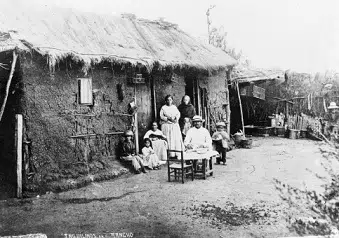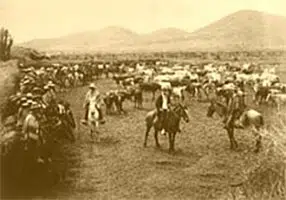 The concept of tenancy is used in Chile . The dictionary of the Royal Spanish Academy ( RAE ) recognizes two meanings of the term.
The concept of tenancy is used in Chile . The dictionary of the Royal Spanish Academy ( RAE ) recognizes two meanings of the term.
The first meaning mentioned by the RAE refers to all tenants . The second, to the system that was developed in a rural environment with the participation of tenants.
To understand what tenancy is, therefore, it is essential to focus first of all on the notion of tenant. In Chilean territory, a person who resided in a field was called a tenant, with a room to live in and land to exploit on his own , although with the commitment to work in said field for the benefit of its owner .
According to historians, tenancy arose in the middle of the 17th century . Based on the demographic growth of the population of free mestizos , the owners of the haciendas developed the tenancy system to incorporate these people into production .
In this framework, the landowners began to settle the mestizos in areas far from the ranches , allowing them to work the land but forcing them to pay an annual fee in kind and carry out labor tasks . This is how tenancy was instituted, which also helped ranchers protect the boundaries of their land.
The horse tenants were those who carried out the services that required the riding of a pack animal. In addition, they had land to plant wheat, a space to live and they had the right for a maximum of twelve animals to graze in the fields or be in the landowners' pastures.
It is often said that the tenancy derived from the encomienda . Once established, the tenancy subsisted without major modifications until the middle of the 20th century . From then on, various social and political movements began to demand the end of this system, which was achieved through the agrarian reform that Salvador Allende deepened during his regime.
 Regarding the encomienda , it was a socioeconomic system that emerged in Spain that consisted of the exploitation of indigenous people by tying them to a lifelong debt. Although today it is difficult for us to believe that measures like this were in force, the colonizers demanded that they work in exchange for protecting them from their enemies, teaching them their language and saving them through the Christian religion. It was a relationship of dependence by imposition, a form of slavery without a doubt, since the natives lived happily until they were invaded.
Regarding the encomienda , it was a socioeconomic system that emerged in Spain that consisted of the exploitation of indigenous people by tying them to a lifelong debt. Although today it is difficult for us to believe that measures like this were in force, the colonizers demanded that they work in exchange for protecting them from their enemies, teaching them their language and saving them through the Christian religion. It was a relationship of dependence by imposition, a form of slavery without a doubt, since the natives lived happily until they were invaded.
The French historian and naturalist Claudio Gay Mouret , born in 1800 and died in 1873, was one of the defenders of the theory that related tenancy to the encomienda, as collected by the Chilean historian and diplomat Diego Jacinto Agustín Barros Arana in his work Historia General , published in 1886. However, modern historians associate it with the economic and demographic depression of the 17th century.
To add more contextual information, we can say that outside of Chile, the concept that designated the term inquilinaje could be mentioned as colonial hacienda , a type of economic organization very common in the Spanish system applied to the territories of the American continent. This was valid until one hundred years after the seigneurial regime was abolished in Spain, even until the economic, legislative, social and political measures known as agrarian reforms took place in the mid-20th century.
It should also be added that this concept, for its part, derived from the Andalusian hacienda , a large estate dedicated to agriculture, usually established around very valuable homes from an architectural point of view. It was during the time of the viceroyalty that this model of exploitation was exported to the American continent.
